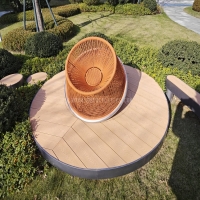Welcome to the website for landscape facilities products and knowledge.
What are the key differences in user behavior between round, square, and rectangular landscape tables?
The shape of a landscape table—whether round, square, or rectangular—significantly influences user behavior, interaction, and functionality. Understanding these differences can help you choose the right table for your space and purpose.
Round Tables:
Round tables promote equality and inclusivity, as everyone sits at an equal distance from the center. This shape encourages conversation and collaboration, making it ideal for social gatherings or brainstorming sessions. However, round tables may lack defined personal space, which can feel uncomfortable in formal settings.
Square Tables:
Square tables offer a balanced and structured environment. They work well for small groups, providing clear boundaries and equal visibility. However, larger square tables can create distance between users seated on opposite sides, potentially hindering communication.
Rectangular Tables:
Rectangular tables are versatile and practical, often used in offices or dining rooms. They accommodate more people and create a clear hierarchy, with the "head" of the table naturally commanding attention. This shape is great for meetings or formal dinners but may isolate those seated at the ends.
In summary, round tables foster interaction, square tables balance structure and intimacy, and rectangular tables excel in functionality and hierarchy. Your choice should align with the intended use and desired social dynamics.
Related search:

Recommendation
Swivel chair-Specialty steel structure woven rattan leisure chair with rotatable design